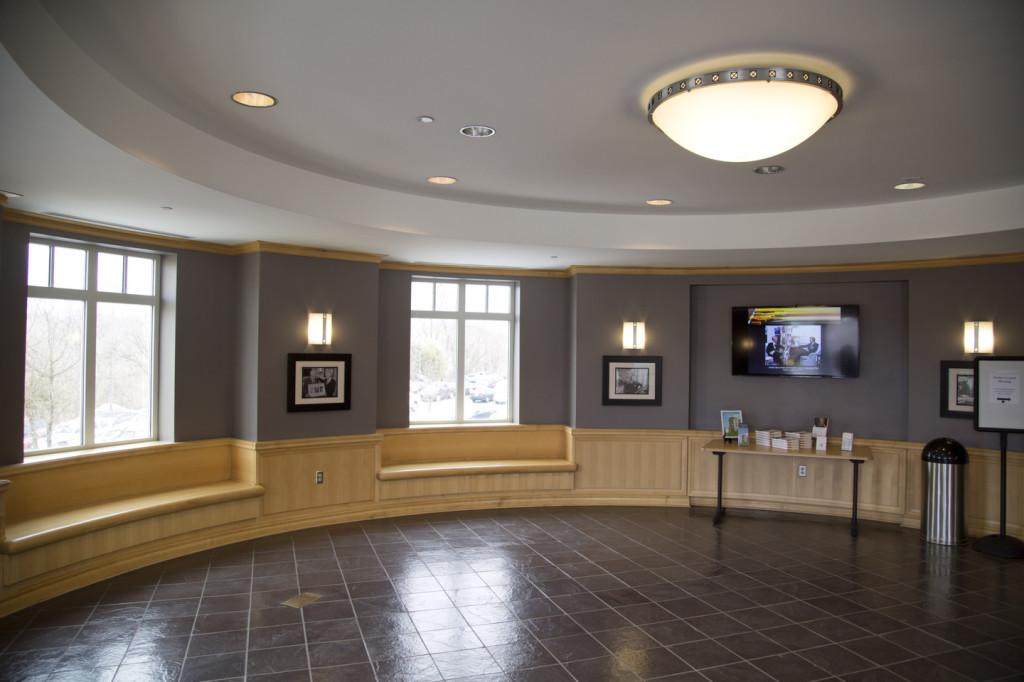Four Shepherd professors recently received grant money from the Experimental Program to Stimulate Competitive Research (EPSCoR). Jacquelyn Cole, assistant professor of chemistry, Laura Robertson, assistant professor of biology, Sher Hendrickson-Lambert, assistant professor of biology, and Colleen Nolan, dean of the school of natural sciences and mathematics, all received grants.
West Virginia is one of the states that is eligible to grant funding through the National Science Foundation (NSF) Experimental Program to Stimulate Competitive Research (EPSCoR). This program is designed to assist scientists at schools with their research programs, often with the purchase of instrumentation.
Megan O’Keefe, a sophomore biochemistry major, said, “I think it’s awesome to get new equipment, and I’m glad our professors applied for the grants.”
LeAnna Barnhart, a secondary education general science major, agreed. “I am proud of my professors for writing these grants in order to enhance the quality of science education for students,” Barnhart said.
Nolan received a $180,000 ($60,000 each year for three years) Summer Undergraduate Research Experience (SURE) grant. Robert Warburton, professor of chemistry, is co-principle investigator for the grant that Nolan received.
“The funding that I received will be used to provide stipends for science majors to complete research projects with faculty here at Shepherd. The funding will allow 10 students to complete research over the summer here at Shepherd and for some of those students to continue their work during the academic year,” Nolan said.
The grant also provides some small funds for research supplies and student travel to present their research findings at the West Virginia academy of science meeting. All of the funding from this grant will be used to support students. For all of these grants, Shepherd University will provide funds, known as matching funds, to fully fund the proposed activities. Many funding agencies ask for colleges and universities to provide matching costs as a way of demonstrating their commitment to the project.
Sher Hendrickson-Lambert received a $40,000 innovation grant. She will use her grant to purchase equipment to establish a Laboratory of Genetic Diversity.
Cole received a $20,000 instrumentation grant for the purchase of a liquid chromatography instrument that will be coupled to an existing mass spectrometer in the chemistry department to form an LC-MS instrument, the first one in the chemistry department here at Shepherd. There are two projects Cole has in mind for the instrument: first will be her research project, which will be a study of the proteomics and metabolomics of plants, and second will be the development of lab exercises for the upper level chemistry courses to better prepare Shepherd students.
Robertson received a $20,000 instrumentation grant for the purchase of a 2100 Bioanalyzer microfluidics system to determine size, quantity, and quality of DNA, RNA, and protein. Conventional gel-based methods for measuring size of these biomolecules can require lengthy amounts of time (some gels run for 36–48 hours) and may use hazardous chemicals.
Robertson said, “When I was a graduate student, working with RNA was a bear. I ran great big gels in the hood for over 24 hours and these gels used formaldehyde. Now I can analyze my RNA using a tiny chip (a square about two inches across) and get my results in 30 minutes. Wow!”
This instrument is an example of the miniaturization trend prevalent throughout science and will be used in classes and for faculty and student research.
Cole described the grant-writing process as “more challenging that I first imagined because I had to balance researching an idea and writing the grant with my teaching and laboratory duties.”
The grant itself was several questions that needed to be answered as well as a research proposal and budget outline. “The department helped out greatly by providing support and editing,” Cole said.
Robertson said, “Grant writing can be time consuming; however, it is an extremely important process that can provide funding for expensive instrumentation and research opportunities.”
Nolan said the grant-writing process is different each and every time.
“As I have written more grants, I would say that the process has become easier but it is still challenging. For me, the most challenging aspect of writing any grant proposal is to fully and clearly articulate the goals, objectives, and activities within the page limit for the proposal,” Nolan said. Larger grants are very time consuming and can take months to complete.
Cole said, “I’m excited to see this instrument come to campus and I’m looking forward to having research students begin work on the project as early as fall 2014.” She stated it will be a slow start with needing to calibrate the instrument, develop the procedure to extract proteins and metabolites from plants, create an instrumental method, and work with the data, but it will be an excellent process for students because this will be very similar to what they would see in their first job.
Ferris Sinnas, an environmental science major, said he is “really excited they are providing more opportunities to students and providing an edge for our studies outside of Shepherd in the real world.”
Nolan said “these opportunities help prepare students to enter their chosen profession or to move into graduate or professional programs and be successful.”
The faculty members also benefit by being able to work more closely with students and help the students explore a research area that is of interest to both the student and faculty member. “The success of the students and faculty is what makes all of this possible,” Nolan said.
